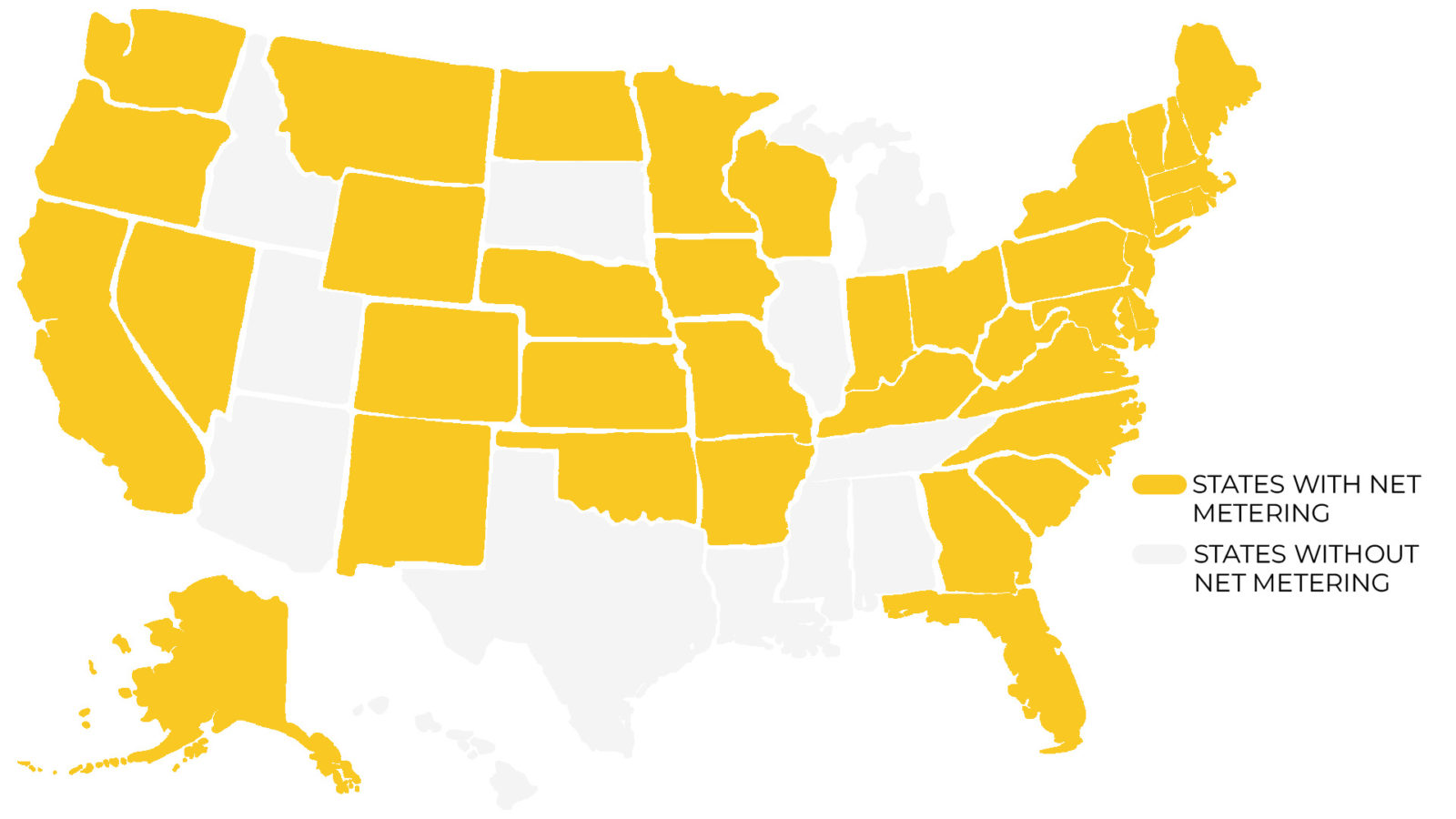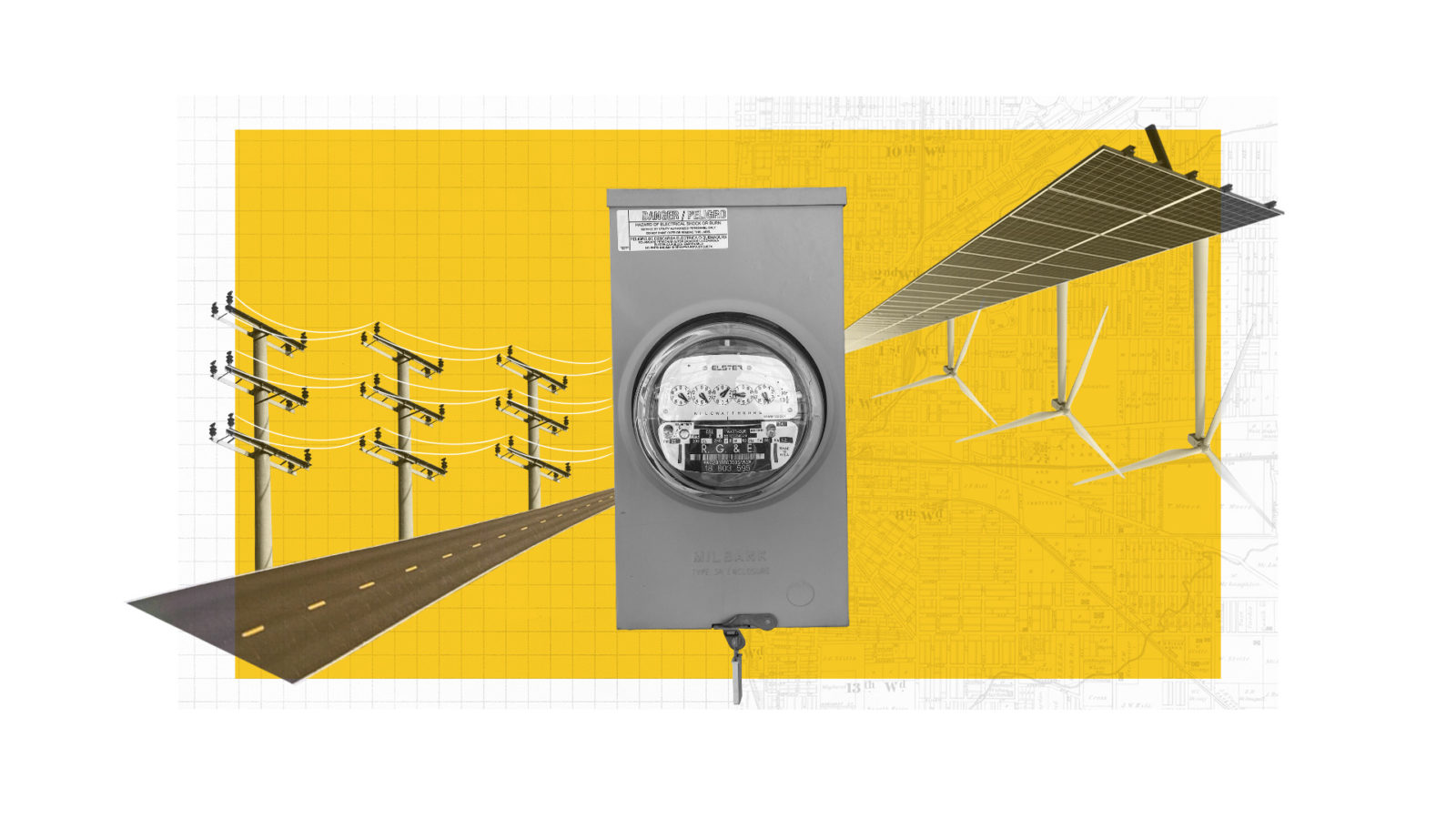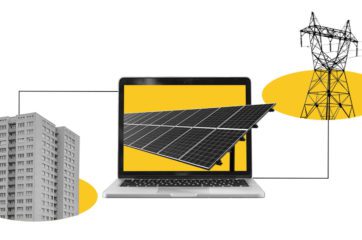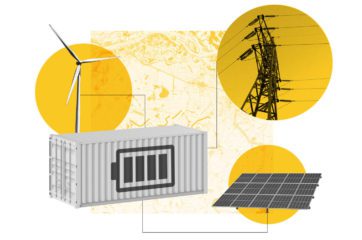Climate XChange’s Dashboard Digest is a deep dive on each of the policies that we track in the State Climate Policy Dashboard and an exploration of how these policies can interact with one another to form a robust policy landscape. The series is intended to serve as a resource to state policy actors who are seeking to increase their understanding of climate policies, learn from experts in each policy area, and view examples of states that have passed model policies. We’re beginning our series by exploring renewable energy and energy storage policies.
Net metering is an important piece of the puzzle that makes up the interlocking nature of renewable energy policy. In a previous article, we covered a framework known as policy stacking. This National Renewable Energy Laboratory concept suggests that there’s an optimal order in which states should pass renewable energy policies. Different types of policies are sorted into three levels: foundational policies that reduce barriers, policies that create a market and grow demand, and ones that offer financial incentives to further expand the renewable market.
Net metering is foundational in this framework. Having a strong net metering policy sets states up for success when they begin to create demand for renewables. Effective policies form rules for projects that generate excess energy for the grid, including how utilities will pay for that energy.
This article is a part of our Dashboard Digest series and explores why net metering policies exist, what makes them effective, and how different states have implemented net metering.
Overall State Policy Coverage

Origins of Net Metering
The concept of net metering began as an idea for a low-income housing project in 1970’s Boston, MA. Steven Strong, an engineer working on energy technology, approached developers for the project and asked if he could install solar panels on the roof. They said yes and Strong got to work.
At this time, solar panel technology existed but it was expensive and relatively uncommon to find on homes. Strong was able to attach these panels to the roof, but there was still the question of how they would connect to the building’s electricity. Though the panels could just be connected to the building’s power, Strong felt that this was inefficient. What if there was sunlight, but the building didn’t need all of the energy created at that time? Strong’s solution was to connect the solar panels in a way that the extra energy would flow into the power grid and roll back the dials on the building’s electric meter. The building’s residents would pay for the energy they used from the electric utility minus the energy produced from solar panels — the overall net consumption.
Interestingly, the electric utility wasn’t aware of this plan until the system was fully operational. The building’s developers told Strong that they would deal with the utility, and elaborated that “it’s better to ask for forgiveness than to ask permission.” This risky move worked out, because a utility executive ended up praising the solar system at the building’s ribbon cutting ceremony.
This process of producing energy to offset your electric bill became known as net metering. Eventually it spread to other states with Minnesota passing the first net metering law in 1983. Since then, the rules behind net metering have been refined but still greatly differ from state to state.
Read More about Steven Strong: Outside/In Podcast — The Accidental History of Solar Power
What is Net Metering?
So what exactly does net metering entail? Electric utilities charge customers based on the amount of electricity, or load, consumed during a monthly billing period, measured from an electric meter on the customer’s property. Net metering allows customers who produce renewable energy to offset their load and be credited for electricity that they produce by injecting it into the energy grid.
Renewable electricity generated at homes and other properties spread throughout a utility’s territory is known as distributed generation. This differs from centralized generation, the traditional notion of a large, singular power plant sending electricity into the energy grid. Distributed energy generation can lead to a more resilient electricity system by diversifying the source and location of energy feeding into the grid. And by producing electricity at home, customers can cut down on energy bills and contribute to the decarbonization of energy systems.
Without net metering, there are limitations to having an energy generation system, like rooftop solar, at home. In many cases, customers won’t be able to use all of the electricity produced by their distributed systems. A homeowner with solar panels may not actually need the energy at the time it’s generated, and it could go to waste if it can’t be stored for later use.
Net metering policies can help address these limitations. If that solar system is connected to the energy grid, the owner can send that excess electricity to be used by other customers who may need it. By selling the power back to the utility, the electric grid acts as a conduit for distributed energy generation.
Building On Federal Energy Policy
While federal law already allows for the sellback of electricity to utilities, state net metering policies offer a better reward for the seller. Net metering policies build on a federal law known as the Public Utility Regulatory Policies Act of 1978 (PURPA), which includes rules for compensating certain distributed energy generators known as Qualifying Facilities. Under PURPA, a Qualifying Facility could still be paid for the electricity they sent to a utility, but at a potentially lower rate than what that customer pays for their own electricity. The Qualifying Facility pays the utility’s retail rate for electricity, but the utility only has to reimburse the Qualifying Facility for their excess energy at the utility’s avoided energy cost of purchasing that energy on their own or the wholesale cost.
In contrast to the PURPA mechanism, net metering allows customers to send excess energy to the utility and use the credits from that energy at a later time. Utilities are required to credit the account for customers who use net metering and customers can use this credit towards the current monthly bill, or in many cases rollover into following billing cycles. It’s important to note that customers are credited, not paid, for their excess generation. This way, customers are not taxed on their earnings from their distributed energy systems. Net metering policies will specify the price that a utility must credit a customer for their energy, often close to if not the full retail rate for the electricity.
A Qualifying Facility is either a small power facility that primarily uses renewable resources or a cogeneration facility that produces electricity and another form of useful thermal energy (such as heat or steam).
Strengthening Renewable Policies with Meter Aggregation
Even though net metering leads to financial incentives for many customers, there are some cases where property owners may not see those same benefits. Aggregate net metering can expand the renewable energy market by including customer niches that weren’t originally included. Since meter aggregation seeks to include additional customers, it’s considered a market expansion policy in the stacking framework.
Normally, net metering allows for offsetting energy use based on the readings from a single electric meter. For most smaller properties that only have one meter, this makes sense. Some larger properties, however, may have multiple meters measuring electricity load in different areas. Aggregate net metering, or meter aggregation, allows these customers to use energy they produce to offset their energy use across multiple meters.
Large farms, for example, may have electricity meters spread across the property and a renewable energy generation system connected to one of them. With traditional net metering, the property owner would need energy generation connected to each individual meter to offset the energy used on the same meter. In many cases, this may be impractical. When a state offers meter aggregation, the credits from renewable energy generated on one meter can be spread across all of the others on the property.
States have varying requirements to qualify for meter aggregation including the types of customers, the location of renewable generation facilities, and the overall capacity of the system.
Aggregate net metering allows customers to spread their energy generation across multiple meters on a property.
What Makes Net Metering Policies Effective?
There are many factors that can contribute to the effectiveness of net metering policy apart from the actual rules outlined in the legislation. These include economic constraints, interacting energy policies, and additional barriers to renewable energy adoption. The following list are recommendations for effective net metering policies, adapted from the State Policy Opportunity Tracker.
It shouldn’t matter how a customer produced energy for it to qualify for net metering. All types of distributed energy generation should be eligible for net metering. Renewable sources would contribute the most to decarbonized energy systems, but any amount of distributed energy can result in a more resilient electric grid. For example, Puerto Rico has a mostly centralized energy grid which proved to be insufficient when the U.S. territory was battered from major weather events. Because the grid was set up as a centralized system, damage to it led to many months without power for much of Puerto Rico.
All customers should be allowed to participate in net metering. Net metering systems should be accessible for residential, commercial, and industrial customers. Limiting who can participate can stunt the growth of distributed renewable energy.
If there is a size limit on net metering systems, it should be large (Two megawatts). Limiting the size of eligible systems discourages customers with ample renewable resources from generating a lot of electricity. By allowing larger systems, states can build out their distributed energy resources which can contribute to renewable energy targets. There are complicated engineering factors, but one megawatt of electricity can power around 190 homes in the United States, on average.
Net metering should not have special fees to participate. Fees on net metering are financial disincentives that are counterproductive to the purpose of the policy. Net metering policies should incentivize installation of renewable energy systems and including additional fees takes away from this incentive.
Unused credits from net metering should rollover into future months without expiration. One of the major benefits to net metering is the ability for the grid to act as energy storage for a customer’s renewable energy system. Excess power is injected into the grid and used by another customer with higher energy demands at the time. But at a later date, the net metered customer should be able to reap the benefits from their power production. Effective net metering policies allow customers to use their energy credits at any point in the future – when they may have a greater demand for energy such as with cooling their homes during hotter months.
Customers with multiple electric meters should be able to spread their renewable energy generation across them. Meter aggregation encourages people with large properties, like farms that may have multiple meters, to install a renewable energy system on one of them. This way, their renewable energy from one meter can reduce the overall load from the others.
Customers shouldn’t have to own their renewable energy system to benefit from net metering. Even though renewable technologies like rooftop solar are becoming more affordable, the cost is still prohibitive for some customers. Additionally, it may be impossible or impractical for renters to install solar panels on their homes. When third-parties pay for and install solar systems on a customer’s property, that customer should still be allowed to benefit from net metering.
Utilities should pay retail prices for excess power generation. Customers should be paid at the retail rate for electricity that they sell to the utility. Higher rates help customers afford the sometimes prohibitive costs of installing rooftop solar.
Pushback on Net Metering
Environmental justice groups are quick to note some limitations to net metering policy when it comes to solar adoption. Some groups point out that the way many policies are currently designed benefits wealthier, non-minority customers the most. A report from the California Public Utilities Commission found that 25 percent of the state’s population live in disadvantaged communities, but only 11 to 12 percent of net metering systems are installed in these areas.
There are significant barriers that can keep people from benefiting from net metering, particularly property ownership and the upfront costs of solar installation. These barriers are not exclusive to net metering participation and need to be addressed by all renewable energy policies. Net metering is most effective and equitable when there are other policies in place to increase frontline communities’ access to distributed resources. Net metering policies that pay retail prices and allow for third party ownership can help compensate for the cost of solar systems in disadvantaged communities. Additional policies such as shared renewables can also increase access to the benefits of net metering.
It’s important to note that in practice, net metering has not been perfected in any state. Every state with net metering legislation is missing key components that can limit the effectiveness or accessibility for all potential customers. Electric utilities have also pushed back against net metering, but for a fundamentally different reason: energy ownership.
Historically, utility companies have sought to limit the scope of net metering policies. Utilities are often powerful lobbying entities, and they have had some success limiting net metering in certain states. For example, a local utility in Nevada lobbied against the state’s existing net metering policy, claiming that it puts unfair infrastructure maintenance costs on non-net metered customers. The argument is that all electricity customers use the electric grid, regardless of net metering status, but because net metering customers have lower energy costs, a greater financial burden falls on the others to pay for the upkeep of the grid.
In 2015, this argument won over the Nevada Public Utilities Commission, which significantly reduced the price that utilities had to pay for net metered power. This decision led to several solar companies leaving the state and the next quarter saw 92 percent fewer rooftop solar installation permits.
Shared renewable policies allow for systems with subscribers who pay for a portion of the energy produced by the larger system. This gives access to renewable energy generation to people, like renters, who may not be able to install it where they live.
State Examples
Colorado
Colorado adopted a net metering policy in 2004 with a ballot initiative in the general election. The policy applied only to the state’s investor-owned utilities, the private companies that distribute electricity. The measure that passed in 2004 allowed customers to offset up to 120 percent of their annual average electricity consumption as long as the electricity is generated with qualifying renewable energy resources including solar-plus-storage systems.
At the end of the month, any net excess renewable energy generation is credited to the customer’s next bill. If a customer’s generation exceeds their consumption during a calendar year, the utility must reimburse the customer for the excess energy at the utility’s average hourly incremental cost for that year. Alternatively, a customer may choose to have that net excess generation carried forward indefinitely instead of the compensation.
Qualifying Resources: Geothermal Electric, Solar Thermal Electric, Solar Photovoltaics, Wind (All), Biomass, Hydroelectric, Wind (Small), Hydroelectric (Small), Fuel Cells using Renewable Fuels
In 2008, the state passed legislation that required other municipal utilities with greater than 5,000 customers and all electric cooperatives to offer net metering. Residential customers could have systems that produce up to 10 kilowatts and commercial and industrial customers could produce up to 25 kilowatts. For these customers, net excess generation is applied as a credit to their next bill and the utility must pay out the remaining balance at the end of the year.
Depending on where you live, a 10 kilowatt system can provide enough energy to power the average home in the U.S.
Connecticut and Hawaii
Net metering has existed for decades, but is evolving to continue to be effective in the modern energy policy landscape. Connecticut and Hawaii present two examples of policies that differ from traditional net metering in ways that adapt to the changing circumstances.
Connecticut’s new rules allow for low-income households or those in distressed communities to be paid higher prices for the excess electricity they produce. While these households may still have difficulty with the upfront investment of something like rooftop solar, this incentive can potentially ease the burden and increase access to distributed renewables.
Hawaii’s approach to modern net metering seeks to address the challenge that there are different demands for energy depending on the time of day. One utility, Hawaiian Electric, is offering higher rates for energy that is sold back to the grid during evening hours when customers need more electricity. This plan requires customers to have on-site energy storage, but paying higher rates can make these systems more attractive and accessible.
Qualifying Resources: Geothermal Electric, Solar Thermal Electric, Solar Photovoltaics, Wind (All), Biomass, Hydroelectric, Wind (Small), Hydroelectric (Small), Fuel Cells using Renewable Fuels
About CNEE: The Center for the New Energy Economy was founded in 2011 as a department at Colorado State University by Colorado’s 41st Governor, Bill Ritter Jr. The Center convenes and facilitates dialogue among policymakers and stakeholders, connects energy policy leaders and experts, creates and maintains free, publicly available tools and resources, and publishes energy policy research.
About The State Policy Opportunity Tracker (SPOT) for Clean Energy: The SPOT for Clean Energy is a hub of information on state-level clean energy policy. Intended as a planning aid, the SPOT for Clean Energy aims to inform decision-making by providing policymakers, regulators, and interested stakeholders a clear snapshot of existing state policies and opportunities for future policy adoption.






